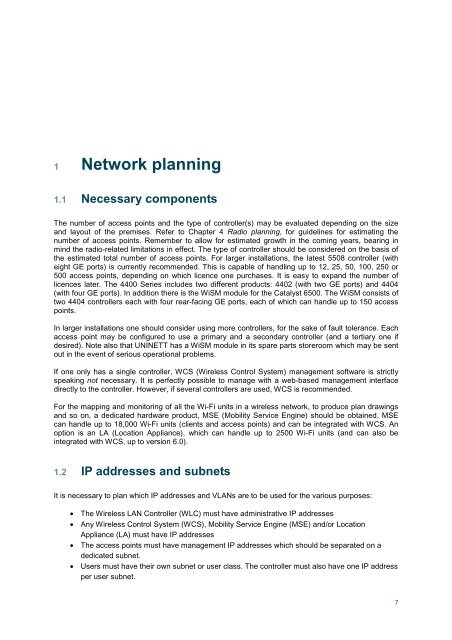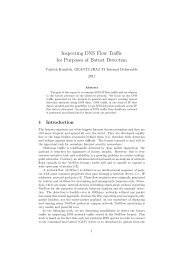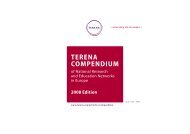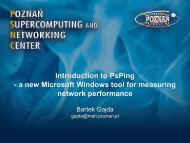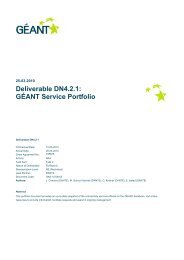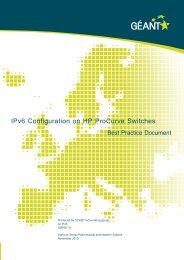Guide to configuring eduroam using a Cisco wireless controller Best ...
Guide to configuring eduroam using a Cisco wireless controller Best ...
Guide to configuring eduroam using a Cisco wireless controller Best ...
Create successful ePaper yourself
Turn your PDF publications into a flip-book with our unique Google optimized e-Paper software.
1 Network planning<br />
1.1 Necessary components<br />
The number of access points and the type of <strong>controller</strong>(s) may be evaluated depending on the size<br />
and layout of the premises. Refer <strong>to</strong> Chapter 4 Radio planning, for guidelines for estimating the<br />
number of access points. Remember <strong>to</strong> allow for estimated growth in the coming years, bearing in<br />
mind the radio-related limitations in effect. The type of <strong>controller</strong> should be considered on the basis of<br />
the estimated <strong>to</strong>tal number of access points. For larger installations, the latest 5508 <strong>controller</strong> (with<br />
eight GE ports) is currently recommended. This is capable of handling up <strong>to</strong> 12, 25, 50, 100, 250 or<br />
500 access points, depending on which licence one purchases. It is easy <strong>to</strong> expand the number of<br />
licences later. The 4400 Series includes two different products: 4402 (with two GE ports) and 4404<br />
(with four GE ports). In addition there is the WiSM module for the Catalyst 6500. The WiSM consists of<br />
two 4404 <strong>controller</strong>s each with four rear-facing GE ports, each of which can handle up <strong>to</strong> 150 access<br />
points.<br />
In larger installations one should consider <strong>using</strong> more <strong>controller</strong>s, for the sake of fault <strong>to</strong>lerance. Each<br />
access point may be configured <strong>to</strong> use a primary and a secondary <strong>controller</strong> (and a tertiary one if<br />
desired). Note also that UNINETT has a WiSM module in its spare parts s<strong>to</strong>reroom which may be sent<br />
out in the event of serious operational problems.<br />
If one only has a single <strong>controller</strong>, WCS (Wireless Control System) management software is strictly<br />
speaking not necessary. It is perfectly possible <strong>to</strong> manage with a web-based management interface<br />
directly <strong>to</strong> the <strong>controller</strong>. However, if several <strong>controller</strong>s are used, WCS is recommended.<br />
For the mapping and moni<strong>to</strong>ring of all the Wi-Fi units in a <strong>wireless</strong> network, <strong>to</strong> produce plan drawings<br />
and so on, a dedicated hardware product, MSE (Mobility Service Engine) should be obtained. MSE<br />
can handle up <strong>to</strong> 18,000 Wi-Fi units (clients and access points) and can be integrated with WCS. An<br />
option is an LA (Location Appliance), which can handle up <strong>to</strong> 2500 Wi-Fi units (and can also be<br />
integrated with WCS, up <strong>to</strong> version 6.0).<br />
1.2 IP addresses and subnets<br />
It is necessary <strong>to</strong> plan which IP addresses and VLANs are <strong>to</strong> be used for the various purposes:<br />
• The Wireless LAN Controller (WLC) must have administrative IP addresses<br />
• Any Wireless Control System (WCS), Mobility Service Engine (MSE) and/or Location<br />
Appliance (LA) must have IP addresses<br />
• The access points must have management IP addresses which should be separated on a<br />
dedicated subnet.<br />
• Users must have their own subnet or user class. The <strong>controller</strong> must also have one IP address<br />
per user subnet.<br />
7


